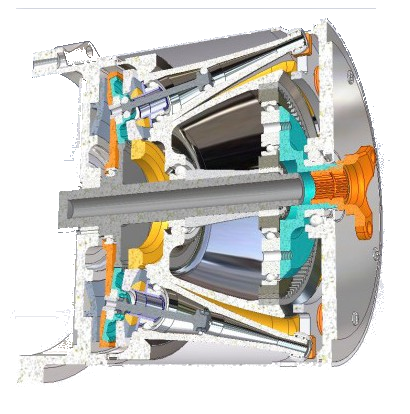No clutch
The clutch inserted in the transmission between the engine and the gearbox allows the temporary disconnection of the torque produced by the engine to allow the changing of the speed and disconnect the wheels from the engine when the vehicle is stationary , keeping the engine switched on .
 The figure shows the pattern of transmission operation Cluch Dual (Double Clutch ), which is to say of Mr Andrew Fulbrook , manager of European powertrain forecasts at CSM Worldwide in London in an interview with Automotive News ( Douglas A. Bolduc June 2005 "Dual clutch to shift past CVT " ) would put the final nail in the coffin of the CVT ! .
The figure shows the pattern of transmission operation Cluch Dual (Double Clutch ), which is to say of Mr Andrew Fulbrook , manager of European powertrain forecasts at CSM Worldwide in London in an interview with Automotive News ( Douglas A. Bolduc June 2005 "Dual clutch to shift past CVT " ) would put the final nail in the coffin of the CVT ! .
With reference to the figure, we can distinguish two primary shafts ( blue and orange ) connectable to the engine through two separate clutches . Basically , the two main shafts , gears are divided : on an odd gears , the other the even gears and reverse. The change takes place , therefore, simultaneously pressing the two clutches : one connects to the new report to the motor while the other disconnecting the old ratio , thus reducing the transit time keeping the engine in gear and shot . Sporting performance is the primary characteristic , paid for by the greater complexity of the system and consequent higher production costs , as well as some problems of lubrication and the limitation of not being able to use "jump" in climbing gear .
 In CVT Warko , thanks to the wide excursion of the transmission ratio is possible to adopt a design solution that allows to realize the function of reversing without the need to use a clutch. In the figure it can be observed that there is friction inside the bell but is inserted an epicyclic gear train called power split . As you can see , the solar train of gears is fixed to the input shaft , the crown is moved by the drive with opposite direction of rotation , is connected to the planetary finally the ' output of the entire system .
In CVT Warko , thanks to the wide excursion of the transmission ratio is possible to adopt a design solution that allows to realize the function of reversing without the need to use a clutch. In the figure it can be observed that there is friction inside the bell but is inserted an epicyclic gear train called power split . As you can see , the solar train of gears is fixed to the input shaft , the crown is moved by the drive with opposite direction of rotation , is connected to the planetary finally the ' output of the entire system .
In operation, in a particular position of the ring and then reaction with a given transmission ratio , the rotation imparted by the drive to the crown of the epicyclic gearing , perfectly compensate the rotation ( contrary ) of the sun by the input shaft . We will therefore absence of motion to the output shaft (connected to the planetarium ) system, even in the presence of rotation " on the spot" of the satellites of the planet. This condition is called ZERO DYNAMIC or "geared neutral" . In this position we have in fact made the disconnection of the torque produced by the engine while maintaining the wheels connected to the engine when the vehicle is stationary . The Zero Dynamic is positioned geometrically to the limit value of the range of variation of the transmission ratio but at about 1/6 of its excursion. In this way, starting from this point toward the lower limit of fact realize the reverse gear while in the other direction will drive the forward motion still available with a wide range of variation of the transmission ratio .
For safety reasons it may be necessary however to provide some mechanism of interruption of the continuity of the chain of the trees input / output for the system to overload this is releasable or to allow a repositioning in zero dynamic in the face of a sudden shutdown of the engine. We want to make note that the speed of excursion under load ring over the entire range of variation of the transmission ratio is less than 1 second but the movement is guaranteed only with the engine running . So in order to allow the restarting of the engine and the repositioning of the CVT at zero dynamic in the event of accidental locking in position different from the dynamic , it is absolutely necessary to unhook the CVT from the wheels in order to proceed with the restart of the drive motor and hydraulic service positioning ring .







